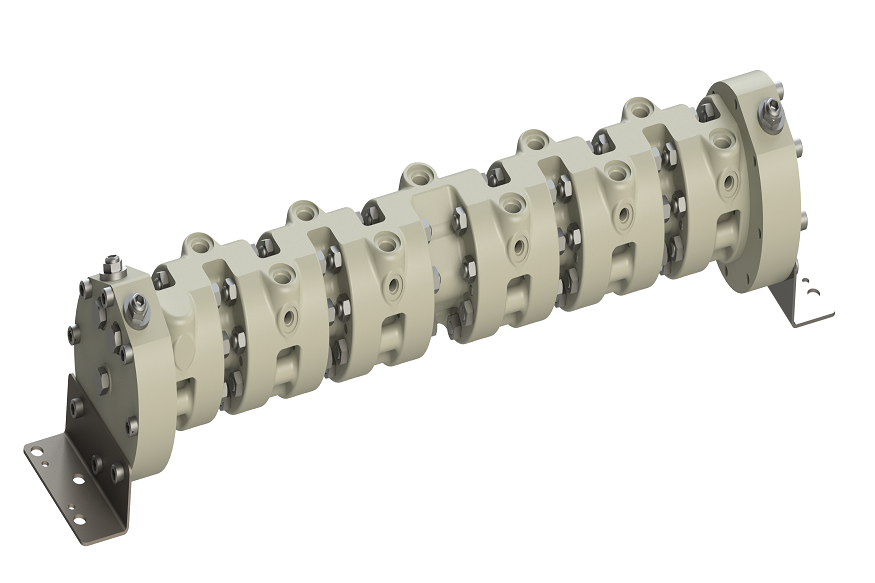Now that we know why maintenance is critical, let’s explore actionable steps to maintain your flow dividers. From visual inspections to performance monitoring, these practices will ensure your equipment remains in top-notch condition.
Schedule Routine Inspections
Routine inspections are the foundation of a thorough maintenance plan. Set a regular schedule to inspect your flow dividers, ideally monthly or quarterly, depending on usage. During each inspection, focus on:
- Surface Integrity: Look for signs of wear, corrosion, or cracks on the exterior surfaces.
- Seals and Gaskets: Check for leaks or damage to seals and gaskets that could compromise fluid distribution.
- Tightening Components: Ensure bolts, screws, and other components are secure.
Documenting these inspections can help track trends and identify recurring issues.
Monitor Performance Metrics
Performance anomalies often signal underlying issues. Monitoring performance metrics allows you to detect potential problems early. Pay close attention to:
- Flow Rates: Monitor the consistency of flow rates being distributed across the system. Any irregularities could indicate wear or internal blockages.
- Pressure Readings: Note any significant drops or spikes in pressure, as they may point to system inefficiencies or leaks.
- Noise Levels: Unusual sounds, such as whistling, clanking, or vibrations, might suggest mechanical problems.
Investing in automated monitoring tools can simplify this process and provide real-time data.
Clean Internal Components
Over time, residue and debris may accumulate within the flow divider, leading to clogs and decreased efficiency. Cleaning internal components is essential to maintaining smooth operation. Here’s how to go about cleaning:
- Drain the System First: Before you begin cleaning, ensure the flow divider is disconnected and all fluids are drained.
- Disassemble Carefully: If applicable, disassemble the flow divider according to the manufacturer’s guidelines.
- Clean With Approved Solvents: Use non-abrasive cleaning solutions to remove dirt and debris. Avoid harsh chemicals that could damage internal parts.
- Reassemble and Test: Once cleaned, reassemble the flow divider and conduct performance tests to verify its functioning.
Ensure Proper Lubrication
Proper lubrication is critical to reduce friction and wear between moving parts. Without adequate lubrication, your flow divider may experience premature damage. To ensure proper lubrication:
- Use manufacturer-recommended lubricants.
- Check all moving parts regularly for signs of excessive friction.
- Replace or top up fluids as necessary to maintain optimal levels.
Regular lubrication doesn’t just extend the lifespan of your flow dividers; it also boosts their efficiency and reliability.
Replace Worn-Out Components
No equipment lasts forever, and the same goes for flow dividers. Components like seals, bearings, and valves experience wear with prolonged use. Replace worn-out parts whenever necessary to prevent total system failure. Signs that replacements are due include:
- Visible cracks or wear on seals and gaskets.
- Irregular fluid flow or flow losses.
- Unusual noises during operation.
Proactively replacing parts can often save money in the long term by avoiding larger, costlier repairs later.
Follow Manufacturer Guidelines
Each flow divider model may have unique requirements, and no maintenance plan is complete without consulting the manufacturer’s guidelines. These guidelines typically cover:
- Specific cleaning and lubrication instructions.
- Recommended inspection intervals.
- Warnings about chemicals or tools that could damage the flow divider.
By adhering to these recommendations, you ensure compatibility and prevent accidental damage.
Common Maintenance Mistakes to Avoid
Even with the best intentions, mistakes can happen. Avoiding common pitfalls will improve the effectiveness of your maintenance routine. Here are some missteps to watch out for:
- Skipping Small Issues: What starts as a minor problem (e.g., a small leak) can quickly escalate into significant damage.
- Using Generic Tools: Not all lubricants or cleaning agents are compatible with every flow divider. Stick to manufacturer-approved resources.
- Over-Tightening Components: While ensuring tight connections is important, over-tightening can cause damage and lead to failures.
By maintaining diligence and attention to detail, you can avoid these pitfalls.
Implement a Maintenance Routine Today
Without proper maintenance, their performance can suffer, leading to downtime, reduced efficiency, and increased costs.
Make maintenance a regular part of your operational routine by adopting these pro tips:
- Schedule regular inspections.
- Monitor performance metrics closely.
- Clean and lubricate components frequently.
- Replace worn-out parts proactively.
- Follow manufacturer guidelines for best practices.
By doing so, you’ll ensure your flow dividers remain reliable, efficient, and in service for years to come.

